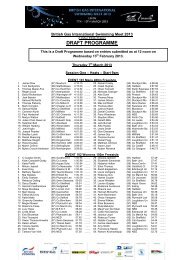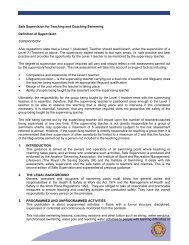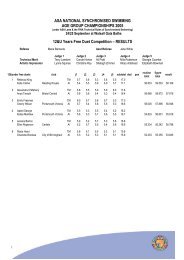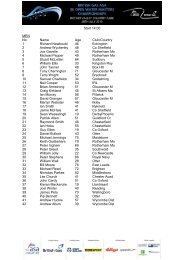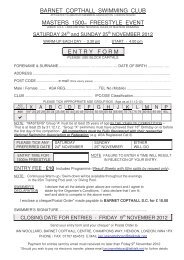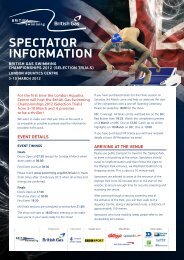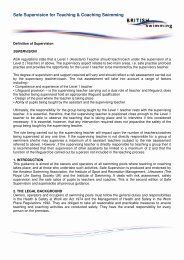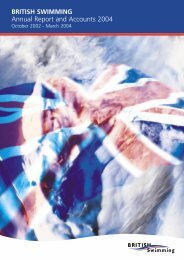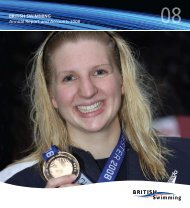Inclusion of Swimmers with a Disability - Swimming.Org
Inclusion of Swimmers with a Disability - Swimming.Org
Inclusion of Swimmers with a Disability - Swimming.Org
Create successful ePaper yourself
Turn your PDF publications into a flip-book with our unique Google optimized e-Paper software.
Teachers should be upskilling constantly<br />
in order to ensure that they are abreast<br />
<strong>of</strong> new ideas and initiatives.<br />
<strong>Swimming</strong> fundamentals and<br />
safety skills<br />
All swimming sessions regardless <strong>of</strong><br />
ability should include practices to ensure<br />
the swimmer is pr<strong>of</strong>icient, happy and<br />
safe. Basic Safety Skills should form the<br />
basis <strong>of</strong> any swimming programme.<br />
These skills include:<br />
l entry<br />
l exit<br />
l buoyancy/balance<br />
l rotation/orientation<br />
l aquatic breathing<br />
l travel<br />
l co-ordination<br />
l spatial awareness.<br />
Teachers should be aware <strong>of</strong><br />
hidden conditions that might present<br />
unexpected problems e.g. asthma,<br />
epilepsy, diabetes, cystic fibrosis, etc.<br />
Specific knowledge about the individual<br />
will determine whether there is an<br />
extra need for a watchful parent or<br />
designated spotter.<br />
Teaching principles<br />
Successful teaching is dependent on:<br />
l good technical knowledge<br />
l willingness to be adaptable<br />
l willingness to further knowledge<br />
l sound knowledge <strong>of</strong> fundamentals<br />
l acknowledgement <strong>of</strong> importance <strong>of</strong><br />
basic safety skills<br />
l ability to deliver appropriate sessions/<br />
schedules to meet individual needs<br />
l awareness <strong>of</strong> hidden medical<br />
conditions<br />
l good observational skills to adapt<br />
strokes to individuals abilities.<br />
Parents/carers as partners<br />
Information, that is relevant to<br />
the swimming situation, needs to<br />
be communicated to the teacher/<br />
coach at time <strong>of</strong> registration. Initial<br />
communication pathways set the<br />
standard for future years.<br />
Useful information is suggested in the<br />
National Plan for Teaching <strong>Swimming</strong><br />
Parent Pack although the following<br />
additional information could be useful<br />
to the teacher:<br />
l is the swimmer able to cope in a<br />
group?<br />
l does the swimmer require 1:1<br />
assistance to move in the water?<br />
l does the swimmer require 1:1<br />
assistance to understand instructions?<br />
l does the swimmer have a special<br />
need that is not apparent?<br />
l has the disability been recently<br />
acquired (ie. amputation, paraplegia)<br />
and so is new to the swimmer?<br />
l are there any restrictions or limitations<br />
in or under the water?<br />
l does the swimmer require medication<br />
during session?<br />
Medical information needs to be<br />
shared where the safety <strong>of</strong> the<br />
swimmer or teacher is concerned.<br />
For all swimmers, the greatest skill is<br />
achieving a safe breathing position.<br />
Horizontal Float<br />
Holding Poolside<br />
Vertical Float<br />
4



